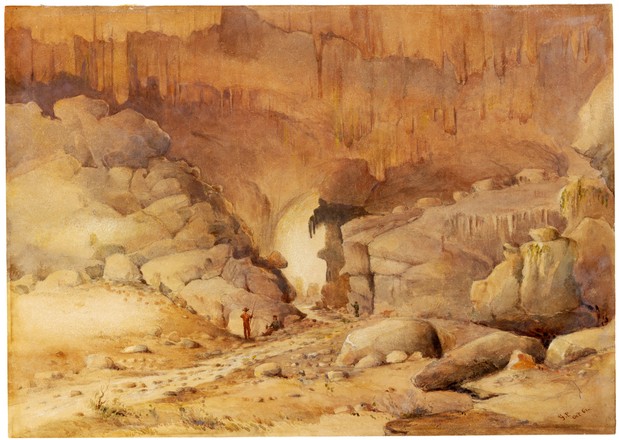
The Entrance, Fish River Caves
October 1861
ML 1396
Watercolour
ML 1396
Watercolour
This painting is one of the first known images of the Grand Arch at the Jenolan Caves. In 1861, the caves were still relatively unexplored and were known by various names such as the Fish River Caves, the Bindo Caves or McKeown’s Caves. It wasn’t until 1884, when a parish map of the area was being prepared that they were officially named Jenolan Caves, after nearby Mount Jenolan.
This image was created by George Ferris Pickering’s in 1861, and depicts quite a different scene to what visitors see today. Pickering’s painting is of significance because it shows how the Grand Arch may have originally looked for thousands of years before tourism in the area boomed in 1880s. The influx of tourism had an immediate impact on the natural state of the caves. Parties of tourists making the trek to the caves camped in the Grand Arch or Devil’s Coachhouse, and would regularly snap off stalagmites or stalactites as souvenirs. By the mid 1880s as a result of the vandalism, many of the cave formations had to be protected by wire fences. A few years later when the main road into the resort was extended through the Grand Arch in 1896, pollution from the car exhaust blackened the formations.


 Back to list
Back to list